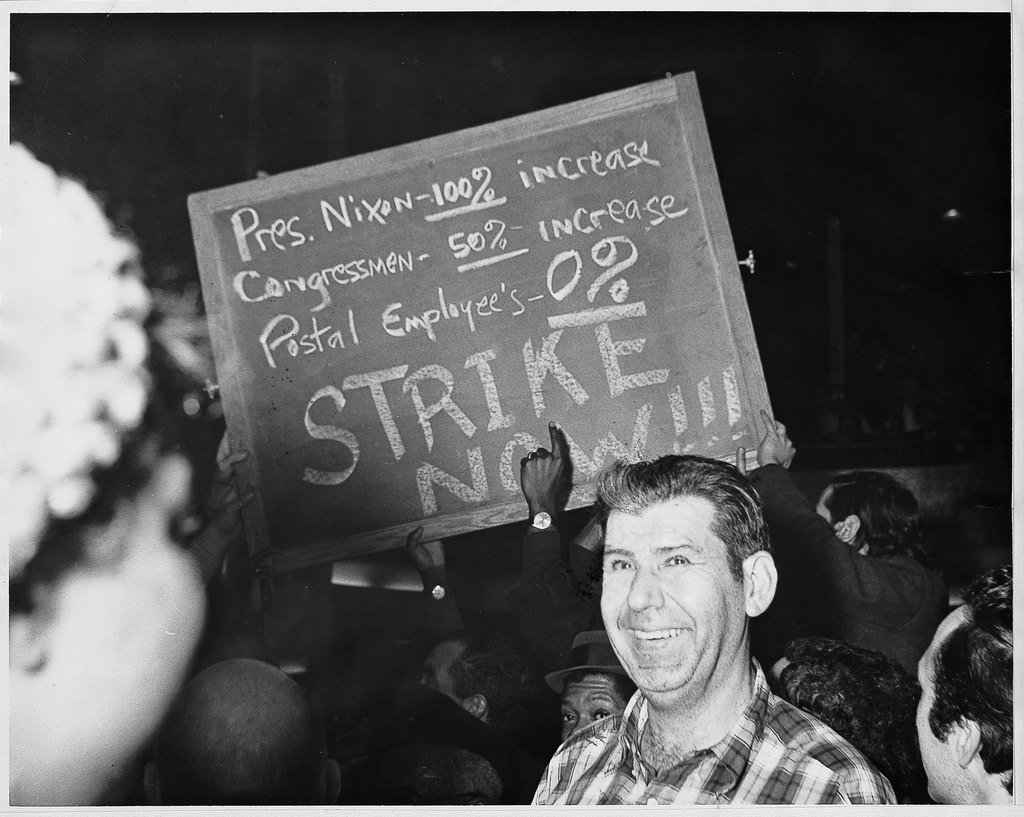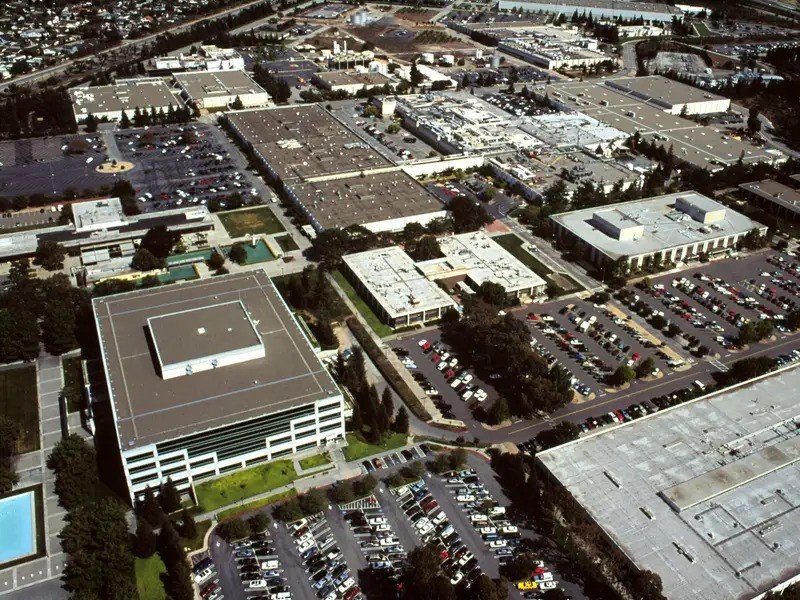In the ever-changing landscape of the American job market, certain professions have consistently held the allure of prosperity.

H. L. Hunt / Elon Musk Source: Wikipedia
From the rock ‘n’ roll era of the 50s to the tech-dominated present, the pursuit of wealth has driven individuals to seek the best-paying jobs available.
Let’s embark on a journey through time, exploring how top-paying professions have evolved, and uncovering the fascinating average salaries that accompanied these roles.
1. The 1950s: A Decade Defined by Stability and Manufacturing
The 1950s heralded a post-war era of economic prosperity and stability in the United States, setting the stage for significant shifts in the labor market.
The aftermath of World War II transformed the nation into a wealthier and more technologically advanced society, reflected in the 1950 census, which listed 469 occupation categories.
During this period, unemployment rates dropped, and the majority of Americans experienced increased disposable income, thanks in part to government initiatives supporting returning veterans.
The wartime mobilization during World War II led to a surge in job opportunities, especially for women who stepped into roles traditionally held by men.
Approximately 28% of employed individuals in the U.S. were women, and they played crucial roles not only in clerical positions but also in professional and technical fields such as accounting, chemistry, engineering, and instruction.
The G.I. Bill, signed in 1944, further fueled economic growth by providing returning veterans with opportunities for education, home buying, and job placement.
The resulting construction boom, fueled by the G.I. Bill’s home loan guarantees, saw a significant rise in construction jobs, including carpenters, electricians, stonemasons, roofers, and decorators.
As the country urbanized with families moving to the suburbs, there was a notable increase in white-collar jobs, which rose by 34% in 1950, constituting over a third of all occupations.
These roles encompassed office managers, accountants, engineers, salesclerks, secretaries, and telephone operators, reflecting advancements in technology and a growing emphasis on research and record-keeping.
The 1950 census, a rich source of employment information, documented the changes in the job market, revealing a workforce transitioning from farm-related jobs to those in manufacturing, construction, and white-collar professions.
Median annual incomes varied by occupation, with families headed by doctors, lawyers, and other professionals having a median income of $7,400, while farming families had a median income of $2,000.

Roy Cohn – famous lawyer in the 50s source: Wikipedia
The median income for all families in 1950 was $3,000, equivalent to approximately $35,400 today, considering inflation.
2. The 1960s: A Pinnacle of Prosperity and Professional Advancements
Stepping into the 1960s unfurled an epoch of profound transformation, where societal shifts, technological leaps, and economic affluence coalesced.
In this dynamic milieu, specific professions stood out as premier income generators, mirroring the prevailing values and economic focal points of the era.
Aerospace Engineer
Average Earnings (1960s): $15,000 annually

The 1960s witnessed the ascent of aerospace engineers to the forefront, riding the wave of national enthusiasm for space exploration.
Integral to the space race, their roles gained paramount importance.
Their remuneration, averaging an impressive $15,000 per year, underscored the recognition of their expertise in navigating the uncharted territories of science and technology.
Doctor
Average Earnings (1960s): $20,000 – $35,000 annually
Doctors, revered as healers in society, experienced a notable surge in income during the 1960s.
The bracket of $20,000 to $35,000 per year highlighted the escalating significance of healthcare and medical proficiency.
This augmented compensation not only reflected the burgeoning demand for their services but also the societal esteem bestowed upon those dedicated to preserving health.
News Reporter
Average Earnings (1960s): $5,000 – $7,000 annually
In an epoch where information dissemination played a pivotal role, news reporters emerged as influential figures shaping public opinion.
Earning respectable salaries ranging from $5,000 to $7,000 annually, these storytellers played a crucial role in delivering accurate and timely news.
Their contributions illuminated the vital role of a free press in fostering informed discussions.
Flight Attendant
Average Earnings (1960s): $5,000 – $9,000 annually
Flight attendants embraced a glamorous yet financially rewarding profession in the 1960s.

60s flight attendant , photograph By Victor Grigas
The average annual earnings, fluctuating between $5,000 and $9,000, showcased the economic diversity within this occupation.
Major aviation hubs offered higher compensation, mirroring the varied economic landscapes associated with the jet-setting lifestyle.
Construction Worker
Average Earnings (1960s): $2.50 – $4.00 per hour
As the builders of the nation’s infrastructure, construction workers played an indispensable role in the urbanization of America.
Their hourly wages, ranging from $2.50 to $4.00, reflected the demand for skilled labor.
Regional variances underscored the diverse economic conditions across the country, emphasizing the importance of their contributions.
Teacher
Average Earnings (1960s): $5,000 – $7,000 annually
Teachers, the bedrock of education, garnered modest yet commendable salaries during the 1960s.
With annual incomes ranging from $5,000 to $7,000, their commitment to shaping the future generation found acknowledgment in a decade that prioritized educational progress.
These premier occupations not only provided financial stability to families but also mirrored the societal priorities and advancements of the 1960s, etching an enduring impact on the evolving panorama of work and wages.
3. The 1970s: Labor Strife, Technological Shifts, and Occupational Transitions
The 1970s was a transformative era marked by both societal upheavals and dynamic shifts in the job market.
As the echoes of war resonated, the United States faced internal turbulence characterized by substantial labor disputes and a shift from goods-producing to service-oriented jobs.
The labor landscape experienced notable changes, with increasing unemployment and major strikes affecting various sectors.
Wages and Employment Trends:
During the 1970s, the average income underwent a significant transformation.
In 1973, an income of approximately $7,500 aligned with the national average, reflecting a snapshot of economic conditions.
By the decade’s close, the average income rose to around $11,500.
However, this income, while showing an increase, remained a fraction of what the average earner made in the subsequent decades, emphasizing the evolving economic dynamics.
Labor Disputes and Unemployment:
Two major trends defined the working environment during this decade: escalating unemployment and extensive labor disputes.
Workers in key sectors like trucking, mining, postal services, and longshore activities found themselves entangled in strikes, becoming a prominent feature of the time.

U.S. Postal Service strike, By APWUcommunications – Own work
For instance, the U.S. Postal Service witnessed a significant strike involving over 210,000 employees in 1970, while truckers initiated a ten-day strike in 1979, involving nearly 220,000 individuals.
Emergence of New Professions:
The 1970s also witnessed a technological revolution that paved the way for novel job opportunities.
The introduction of revolutionary technologies such as the floppy disc, microprocessor, VCR, and email opened avenues for professions supporting the space program, guided missiles, and space vehicles.
The aviation industry also experienced growth with the increasing popularity of air travel, leading to a surge in employment in these innovative sectors.
Occupational Shifts:
Pop culture played a role in shaping perceptions of certain professions.
Television shows glamorized specific jobs, portraying truckers as modern-day nomads, paramedics as heroes, and waitresses as key figures in the diner scene.
TV programs not only entertained but also influenced career choices, making certain fields more appealing.
Income Disparities and Economic Realities:
Despite the shifts and transformations, the average American income in the early 1970s was around $7,500 per year.
By the decade’s end, it rose to approximately $11,500.
However, compared to contemporary standards, these figures highlight the competitiveness of blue-collar jobs, reflecting a different economic landscape.
The 1970s, with its unique blend of challenges and opportunities, set the stage for the evolving job market, paving the way for the changing dynamics that would unfold in the decades to come.
4. The 1980s: Shifting Employment Landscapes and Economic Dynamics
Step into the 1980s, a dynamic era where the workforce witnessed a seismic shift.
White-collar jobs took center stage, job satisfaction danced with optimism, and incomes played a diverse melody. Let’s explore the professional landscape that defined the ’80s!
The Landscape of Employment:
In the 1980s, the American workforce numbered 121,602,000, with 76% of men and 56% of women actively engaged in employment or job-seeking activities.
The era witnessed a 6.1% unemployment rate, translating to 7,425,000 Americans actively seeking employment, with nearly 35% of them being black teenagers.
The Rise of White-Collar Dominance:
White-collar professions dominated the job market during this period, comprising 55% of employment.
This category included managerial, professional, sales, and technical jobs.
In contrast, blue-collar jobs constituted only 28%, with 13% in the service industry and 4% in agriculture.
Additionally, 8% of Americans were self-employed.
Corporate Giants and Military Service:
Leading the employment landscape were corporate giants such as General Motors, Sears, Roebuck & Co., IBM, Ford Motor Co., and AT&T, collectively employing millions.

Phillip Caldwell becoming CEO of Ford in 1980, image: Ford.com
In 1986, the U.S. military had 2,167,000 active-duty personnel, with over a million civilians contributing to defense efforts.
Income Distribution:
In 1987, the median family income stood at $30,853, a threefold increase from 1970.
However, adjusting for inflation, this reflected a 7% rise. Notably, 23% of Americans earned over $50,000, while 4.4% made under $5,000.
Occupational Earnings:
Among hourly workers, the median wage for men was $7.45, while women earned $5.26.

Image: Flying Tiger Line Pilots Association
Salaried workers in high-paying professions like airplane pilots, chemical engineers, and lawyers commanded median weekly earnings surpassing $700.
Government Employment and Poverty Rates:
Government employment engaged 20% of the workforce, with 2.9 million in federal roles.
Conversely, poverty affected 14% of Americans, with less than 3% enduring prolonged periods of poverty.
5. The 1990s: Technology Emerges, Software Developers Thrive
In the transformative landscape of the 1990s job market, characterized by technological advancements and economic intricacies, software developers took center stage, experiencing both burgeoning job opportunities and substantial salary increases.
Job Market Dynamics:
The 1990s witnessed a technology-driven revolution, with software developers at its forefront.

Bill Gates unveiling Windows 95 CREDIT: Photo: Reuters
Despite a booming job market and a record-low 3.8 percent unemployment rate, the correlation between job growth and wage increase was nuanced.
While the dot-com industry thrived, median weekly earnings for U.S workers grew modestly from $447 in 1989 to $478 in 1999.
Professions and Wage Disparities:
High-earning professional service jobs, particularly in real estate, finance, and insurance, experienced significant growth.
However, the earnings in these sectors did not align proportionally with job growth.
On the contrary, the tech industry, led by software developers, saw both job opportunities and salary increases.
The scarcity of skilled professionals in the field contributed to the continuous rise in software developers’ salaries.
Economic Success and Challenges:
Amidst economic success, consumer spending surged, personal debt mounted, and investors reaped rewards from a rising stock market.
Yet, challenges surfaced for the middle class.
A lower percentage of employers provided health insurance, and the offshore movement of manufacturing jobs impacted the workforce.
Despite this, the ’90s laid the groundwork for long-term job security.
Educational Opportunities and Global Competition:
Workers who seized educational opportunities and pursued advanced degrees found themselves well-positioned in the evolving job market.
Those with improved educational statuses benefited from the increase in global trading.
While manufacturing jobs declined, job growth in fishing, forestry, agricultural services, financial services, insurance, and real estate soared.

Print Ad 1990 Manufacturers Real Estate
Careers requiring higher education, especially in burgeoning technology, experienced a boost that extended into the 21st century.
The 1990s, marked by a tech-driven economy, showcased the dichotomy of job market dynamics.
While some sectors thrived with wage disparities, software developers emerged as key players, commanding both job opportunities and substantial salary increases.
This era, with its economic intricacies, set the stage for a workforce that embraced educational advancements and global competitiveness.
6. The 2000s: Rise of the Internet and Surge in IT Management
The onset of the 21st century witnessed a seismic shift in the U.S. job market, particularly in the domain of Information Technology (IT) management.
Surge in IT Management Salaries
In the realm of IT management, salaries experienced a remarkable surge, reaching annual averages between $80,000 and $120,000.
Seasoned professionals, leveraging their expertise, often commanded even higher figures.
Software Developers at the Forefront
Software developers, pivotal in the technological boom, emerged at the forefront of this surge.
Their average salaries spanned from $60,000 to $100,000, contingent on their proficiency and experience in the rapidly evolving tech landscape.
Financial Sector Dynamics
In the financial sector, investment bankers maintained their status as top earners, with average annual salaries fluctuating between $100,000 and $150,000.
Bonuses, especially prevalent in hedge funds and private equity firms, sometimes soared into the millions, eclipsing base salaries.
Healthcare Management and Consulting Soar
Healthcare management and consulting roles experienced heightened demand, translating into substantial salaries for healthcare executives ranging from $90,000 to $150,000.
In the consulting sphere, hourly rates for healthcare consultants varied widely, ranging from $50 to $200 based on expertise and project scope.
Legal and Compliance Landscape
The legal and compliance domain saw increased demand propelled by regulatory changes.
Lawyers specializing in finance and corporate law secured annual salaries between $80,000 and $150,000, while compliance officers, pivotal in ensuring adherence to regulations, earned salaries spanning $70,000 to $120,000.
Energy and Environmental Management on the Rise
Professions related to energy and environmental management witnessed notable growth.
Environmental consultants commanded hourly rates between $50 and $150, while executives in renewable energy and environmental organizations earned competitive salaries, averaging between $80,000 and $120,000.
Executive Compensation Peaks
The executive landscape witnessed substantial compensation packages, with CEOs of Fortune 500 companies earning between $10 million and $20 million annually.
Tech Sector Competitiveness

Aerial photo from 2000 shows IBM’s headquarters in San Jose,the city’s biggest employer at one point. Image: David McNew/Newsmakers
The technology sector remained fiercely competitive, with top-level executives in Silicon Valley earning annual compensation ranging from $1 million to $10 million or more, inclusive of stock options.
7. The 2010s: Tech, Health, and Finance in the Job Spotlight
Tech Boom: Computer Scientists Lead the Way

thanks to Pexels
The 2010s witnessed a tech revolution, reshaping top-paying jobs in the US.
The Bureau of Labor Statistics redefined job functions, highlighting the dominance of computer scientists.
In 2019, their average annual income soared to $127,460, outpacing software developers by 19%.
Developer Demand and Salary Plateau
The tech landscape also revealed shifts in demand and compensation.
While the number of employed web developers rose by 31% from 2013 to 2019, developer salaries showed signs of plateauing.
From 2013-2019, average salaries for developers increased by only 15%, compared to the 21% surge in the previous decade.
Healthcare Heft: Surge in Physician Salaries

Image thanks to sasint
Physicians experienced a significant income boost during the 2010s.
Between 2015 and 2019, primary care physicians saw a 20% increase, reaching $284,000, while specialists experienced a remarkable 21.5% surge, hitting an average of $341,000.
Orthopedics, plastic surgery, otolaryngology, cardiology, and dermatology emerged as the top-earning specialties in 2019.
Wall Street’s Ascendancy: Surging Salaries Post-Financial Crisis
Wall Street, post-2008 financial crisis, witnessed a resurgence. By 2018, average salaries, including bonuses, reached an impressive $422,500—the highest since the crisis.
The securities industry demonstrated robust growth, adding jobs and presenting substantial bonuses, with 24% of employees earning over $250,000.
Economic Tides and Job Markets: A Decade’s Unraveling
The 2010s brought economic upheavals, impacting job markets.
Events like the Eurozone crisis, oil price volatility, Brexit, and President Trump’s election shaped the financial sector.
Reflecting on this dynamic decade, it’s clear that top-paying jobs evolved, adapting to technological leaps, healthcare demands, and economic complexities.
In a world of constant change, these trends serve as a compass for understanding the dynamic relationship between evolving professions and economic shifts.
The 2010s were not just a passage of time; they were a transformative journey for the American job landscape.
8. The 2020s: Tech Titans, Corporate Profits, and Occupational Realities
Stepping into the 2020s, the economic landscape witnessed a seismic shift, prominently marked by the ascendance of technology companies in shaping wealth distribution.
Corporate Giants and Profits Surge

thanks to Riekus
Corporate juggernauts like Walmart and Amazon boasted colossal revenues, with figures reaching $611 billion and $514 billion, respectively.
This surge in corporate profits highlighted the enduring dominance of established players in the market.
Tech Titans’ Compensation Soars
Simultaneously, technology-related occupations experienced a surge in wages, with IT professionals becoming some of the highest-paid individuals.
CEOs in the tech industry, exemplified by figures like Elon Musk and Sundar Pichai, received astronomical compensation packages, reaching billions annually.

Image: THE HILL (AP Photo/Jose Luis Magana)
This trend not only contributed to the burgeoning corporate profits but also accentuated the growing gap between executive pay and the wages of the average worker.
Wage Realities and Income Inequality
However, the broader workforce faced a different reality. Real wages, adjusted for inflation, either declined or plateaued for many U.S. workers over the preceding decades.
This trend underscored concerns about income inequality, with wages representing a diminishing share of the U.S. GDP.
Healthcare Sector Dominance
Delving into specific professions, the healthcare sector emerged as a stronghold for high-paying jobs.
Anesthesiologists, orthodontists, physicians, and surgeons all commanded a median annual salary of $344,667, reflecting the sustained demand for skilled healthcare professionals
The sector grappled with a staffing shortage, exacerbated by the challenges posed by the Covid-19 pandemic.
IT Sector: Beyond Executive Roles
The IT sector, beyond executive roles, saw robust wage growth.
IT professionals, including roles in software development and cybersecurity, earned lucrative salaries, contributing to the broader narrative of occupational disparities.
This evolving dichotomy in compensation across various professions emphasized the nuanced nature of wealth distribution, prompting crucial questions about its sustainability and inclusivity in the United States.
Fun Fact

Sudanese man VS Tim Cook ( Apple’s CEO ) Image: thanks to ammarhreib, By European Commission – Photographer: Christophe Licoppe
The minimum wage in Sudan stands at an astonishingly low $4.99 per month, equating to a yearly total of just $59.88 – currently the lowest minimum wage globally.
To put this in stark perspective, this amount is a staggering 4.43 million times less than what Tim Cook, Apple’s CEO, earned in 2020.
Cook’s income for that year, comprising a base salary of $3 million, stock awards amounting to $250 million, and perks adding up to around $1 million, reached an astronomical total of $265 million.
The disparity is truly eye-opening!
In conclusion
From the post-war stability of the 1950s to the tech surge in the 2020s, the U.S. job market has seen quite the journey.
Picture the ’50s, where manufacturing ruled, setting the stage for shifts in the labor market.
Fast forward to the ’60s, a pinnacle of prosperity with aerospace engineers, doctors, and news reporters in the spotlight.
The ’70s brought labor strife, while the ’80s saw white-collar jobs taking center stage.
The ’90s were the era of tech, especially for software developers, and the 2000s brought a surge in IT management.
The 2010s? Tech, health, and finance took the spotlight.
Now, the 2020s witness tech titans soaring, while income inequality concerns linger.
Through it all, the U.S. job market has danced with societal changes, economic twists, and the ever-evolving professional landscape.
What’s next? Only time will tell.